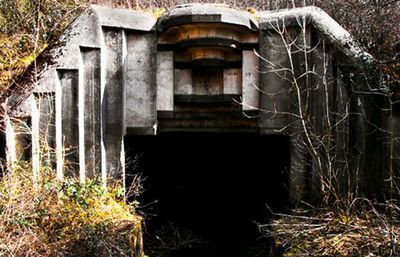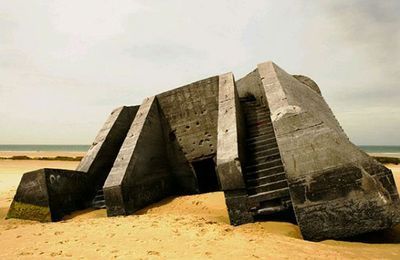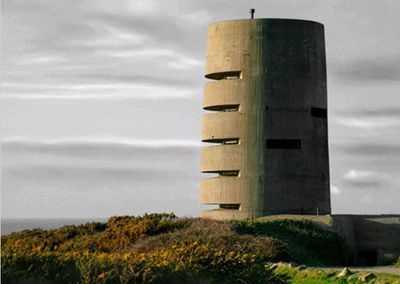The Atlantic Wall
By ADRIAN TAHOURDIN
A compelling mini exhibition opened this week at the Royal Geographical Society entitled “The Atlantic Wall” (free, it runs until June 20 only).
“Hitler’s coastal fortress from the Arctic to the Pyrenees” is its subtitle and that of the short book by Ianthe Ruthven that accompanies it, including around one hundred staggeringly beautiful photographs of the bunkers, casemates or gun emplacements and observation posts that dot 3,000 miles of Atlantic coastline, from Kristiansand in Norway to Capbreton in Aquitaine. She doesn’t tell us what percentage those hundred photos represent of what survives – it would be interesting to know. But she has succeeded in transforming grim material into a work of art.
According to Ruthven, this “chain of World War II fortifications stretching from the Norwegian Arctic to France’s western frontier with Spain . . . is the least acknowledged of Europe’s historical monuments”. It was built between 1942 and 1945 and consumed 17 million cubic metres of concrete (construction was still going on right up to the end of the war); the work mainly done by forced labourers and prisoners of war – 300,000 were working on it at one point in 1944. Meanwhile “local contractors operating as subsidiaries of German companies benefited . . . the Wall is a monument to the profiteers of occupied Europe as well as to those who lived and died building it, or heroically breached its ramparts”. Some 8,000 bunkers were built in scarcely threatened Denmark alone. All of this was designed to repel the expected Allied invasion. Ruthven writes that “Albert Speer who took over the project after the death of Hitler’s chief architect Fritz Todt, recollected during his years in Spandau prison” that it “had been an exercise in futility”. As Ruthven writes, “in the absence of air supremacy, fixed defences were at best redundant, at worst useless”.
In a foreword the architectural historian and TLS contributor Joseph Rykwert talks of the “overwhelming, bare and void structures with which Hitler’s miscalculations littered the west of Europe . . . . They will stand as a lasting token of a mighty miscalculation”. Not the least part of the miscalculation was Hitler’s obsession with the idea of occupying British soil: 10 per cent of the materials were used up building fortifications on the Channel Islands (see below) that were never activated.
The impact of the photos is partly due to the way in which the fortifications have weathered: from the battery with snow-capped mountains as a backdrop in Norway to the bunkers in Capbreton that are now mostly underwater and that Ruthven has managed to capture with surfers bobbing like seals in the foreground and the Pyrenees in the distance beyond. Then there is the moss and lichen. (Sadly the photos available for reproduction here don’t quite convey the sheer beauty of Ruthven’s work.) In Denmark, “BunkerLove” festivals are held. Meanwhile anyone who has visited the Keroman U-boat base at Lorient in Brittany will have been awestruck by its sheer indestructibility. As Ruthven writes, “a 7.4 metres thick concrete roof proved impossible to penetrate despite the Allies dropping some 4,500 tons of bombs” (they destroyed the town instead). The base held out until the German surrender in May 1945.
In a jointly signed article in Le Monde on Monday, Sylvie Barot, the head conservator at the Municipal Archives in Le Havre, and Andrew Knapp, Professor of History at the University of Reading, point out that, while it is appropriate to pay homage to those who gave their lives on the beaches of Normandy, thought should be given too to the French civilians who lost their lives, possibly up to 2,500 on D-Day. 518,000 tons of bombs were dropped by the Allies on French soil – seven times as many as the Luftwaffe landed on British soil – causing around 57,000 civilian deaths. Continuing the stats: Le Havre received 10,000 tons of bombs in a week and was 85 per cent destroyed. Arthur “Bomber” Harris was later to regret that the near total destruction of the port that was intended to serve as a base for Hitler’s planned invasion of Britain did little to hamper the German war effort.
Peter Stothard's Blog
- Peter Stothard's profile
- 30 followers






